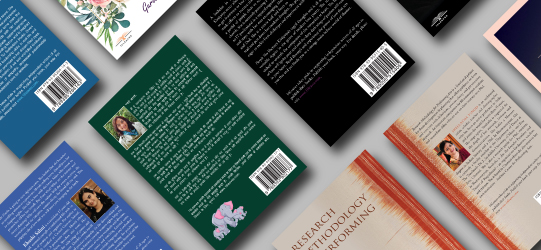

 Back
Back
While the front cover of your book can catch your reader's attention, the back cover lets you keep it!
Imagine an intrepid reader in a bookstore picking up a book with an attractive front cover but a lifeless back cover.
Books displayed front-facing on the bookshelves or sold online to create an impression need the back cover also to be inviting to the readers to complete the job of satisfying the audience. The back cover often contains substantive information like the author's biography, taglines, blurb, and testimonials.
Your book’s cover design will tell potential readers if your book is professionally designed and worth their time.
To get a clear idea of what makes a back cover tick, expose its partner-in-crime – the front cover. When readers browse the bookshelves, the front cover lets them pick it up. But the job is not done! The back cover helps finish the job.
When done well, the back cover will motivate the reader to open the book and start reading. The back cover serves a purpose, just as the front cover does.
Here is what must go on the back cover of your book…
Testimonial
A testimonial from an established author gives the book some credibility. It is a short statement from another author about how good that particular book is.
Summary
A summary is a short description of what goes into a book. On the back cover, include only the essence of the plot since you do not want to give away the entire story. The purpose is to make the reader want to buy your book and read further. Like in a movie trailer, you do not know what will happen in the end, but you feel connected by the atmosphere, the characters, and the promise of what will follow.
Grants and Other Books
Blurbs might even include mentions of other books the author has written or awards won by the author. It is common in authors who are already bestsellers, but it is also possible for beginners to do this if they have won literary prizes before.
It gives the author, and the book, some credentials.
Author Biography
Author Biography sometimes appears on the inside flap, especially on the dust jacket of a hardcover book, and at times on the back cover of a book, as in paperbacks.
An author bio lets the reader know about the person who wrote the book. It might include information about where the author grew up, where the author currently lives, their hobbies, what other books they have written, where they went to school, or which book they are working on next. It keeps them connected to their readers more personally.
Take care of the following when designing a book's back cover:
A good back cover design can be broken down into easy-to-read segments, has an opening question that hooks you as a reader, has takeaway bullet points.
A book back cover is a prime component of your book marketing strategy!